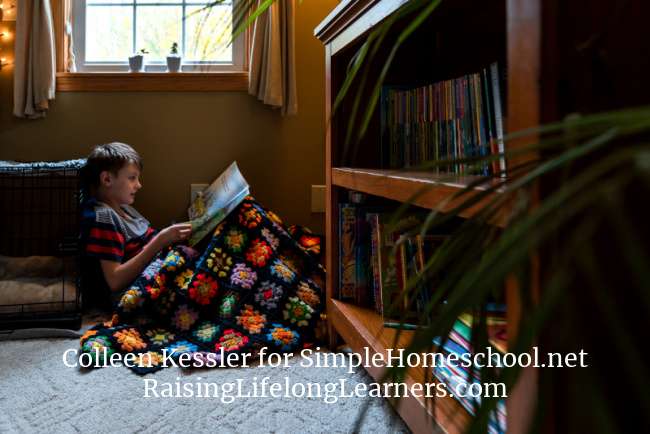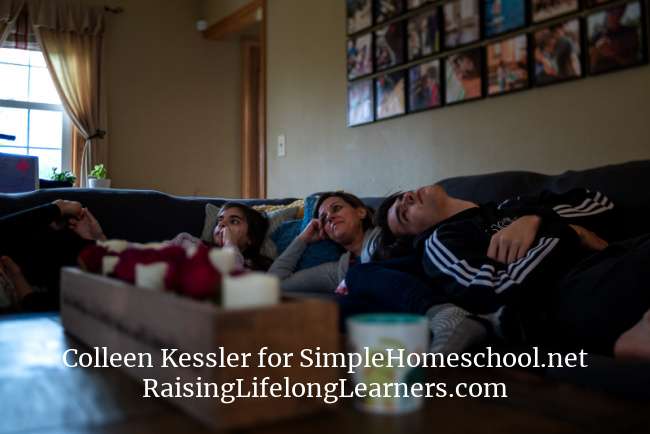Homeschooling Neurodivergent Children with Flexibility ~
Written by Colleen Kessler from Raising Lifelong Learners
The day started off well. We had knocked out math and language arts by lunchtime and were getting ready to dive into a science experiment we’d been looking forward to.
Cue panic attack and subsequent meltdown.
As I soothed and calmed the anxious kiddo, the others drifted to their own projects and passions, and I knew the experiment would be pushed to another day.
Homeschooling presents a unique set of challenges and joys, especially when you have neurodivergent children. While traditional schools struggle to accommodate diverse learning styles, homeschooling is the perfect alternative.
But one of the hardest things for parents who homeschool is finding the right mix between structure and flexibility in how they teach.
This careful balance can have a big effect on how a neurodivergent child learns. Let’s look at some strategies to navigate this successfully.
Homeschooling Neurodivergent Children with Flexibility
First, we need to remember that kids like my anxious one need the structure that provides a stable and safe environment in which to learn. While they don’t necessarily need a strict schedule, they should know what’s expected from day to day. They also need to know that you, their parent and safe space, are there if things become overwhelming and that you’ll flex both structure and schedule so they can recover.
Structure provides a sense of predictability and security for neurodivergent children.
Establishing a routine can help manage anxiety and improve focus. It can ease the overwhelm and distractibility that comes with ADHD. It can help a gifted brain stay on-task long enough to complete a project before taking apart the vacuum to see how it works.
However, rigid schedules may stifle creativity and exacerbate resistance to learning. Finding the right balance is key.

Tips for Incorporating Structure
- Establish a Daily Routine: Create a flexible schedule with designated times for learning, meals, breaks, and activities. Be mindful of your child’s energy levels and attention span when planning tasks.
- Visual Aids and Timers: Utilize visual schedules, timers, and calendars to help your child understand and anticipate daily activities. Visual aids can enhance comprehension and reduce stress.
- Clear Expectations: Communicate expectations clearly and consistently. Break tasks into manageable steps and provide positive reinforcement for progress.
- Create a Dedicated Learning Space: Designate a quiet, organized area specifically for homeschooling activities. Minimize distractions and personalize the space to cater to your child’s sensory needs.
- Utilize Adaptive Tools: Explore adaptive tools and technology to accommodate your child’s learning style. Consider audiobooks, interactive apps, or sensory-friendly materials to enhance engagement.
Flexibility is equally vital in accommodating the dynamic nature of neurodivergent learners. While structure provides stability, flexibility allows for individualized learning experiences, exploration of interests, and the need for a break when it’s warranted.
Embracing flexibility empowers children to learn at their own pace and in ways that resonate with them, and it teaches them to advocate for themselves and to be kind when their brains or bodies just crave downtime.
Strategies for Flexibility
- Follow Your Child’s Lead: Pay attention to your child’s interests, strengths, and areas of struggle. Adapt your teaching approach to capitalize on their passions and foster intrinsic motivation.
- Incorporate Multi-Sensory Learning: Engage multiple senses to enrich the learning experience. Incorporate hands-on activities, field trips, and creative projects to stimulate different modes of learning.
- Allow for Breaks and Movement: Recognize the importance of breaks and physical activity in maintaining focus and regulating emotions. Encourage movement breaks and outdoor exploration to support overall well-being.
- Be Open to Unconventional Learning Opportunities: Embrace spontaneous learning opportunities that arise outside of traditional curriculum. Whether it’s cooking, gardening, or birdwatching, every experience can be a valuable learning opportunity.
- Adjust and Adapt: Stay open to adjusting your approach based on your child’s evolving needs and feedback. Flexibility allows for experimentation and refinement to optimize the homeschooling experience
Balancing structure and flexibility is an ongoing journey in homeschooling neurodivergent children. By embracing the unique strengths and challenges of each child, homeschooling parents can create a nurturing environment that promotes growth, confidence, and joy in learning.
You can always get back to the learning, but ignoring the social, emotional, or heart needs of your kiddo can have long-term negative effects. Being flexible within the structure gives you the framework to meet all the needs of your kiddos, ensuring that homeschooling is the perfect educational choice for your outside-the-box child.
Remember, there is no one-size-fits-all approach. Trust your instincts, stay adaptable, and celebrate the remarkable journey of homeschooling your neurodivergent child.
You’ve got this.
What’s Your Homeschool Mom Personality? Take Jamie’s quiz now and receive a free personality report to help you organize your homeschool based on what your type needs most!



 Weekend homeschool links: April 19th
Weekend homeschool links: April 19th